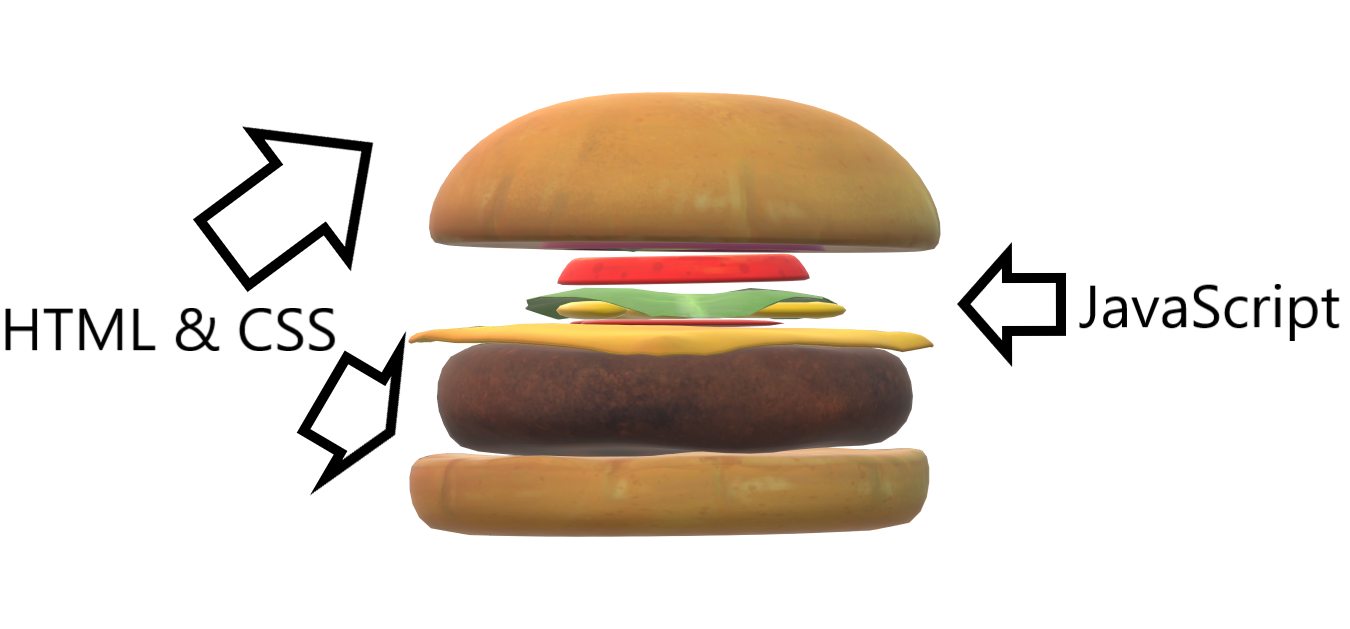I am going to explain web development by comparing web development to a hamburger. This analogy involves using HTML, CSS, Javascript and back-end languages in order to make a hamburger. You may have heard of HTML & CSS before. HTML is a markup language that is used to make a basic website. CSS is used to stylize a web page or a website. If you were to use HTML & CSS to make a hamburger, HTML & CSS would give you the basic foundations of a hamburger. What I mean is that HTML & CSS would give you the burger and hamburger buns to go along with it. You just made a hamburger, but the burger is boring and it doesn’t catch your eye. On the Internet, we would call this a “static” web page. What if you wanted other food items on your hamburger? What if you wanted cheese, lettuce, tomatoes, onions, pickles, ketuchup or mustard? What if you wanted a differnet or specific type of bun? What if you wanted the bun to be a seasme seedbun or a pretzel bun? In order to make the bun stand out, or in web development terms, “dynamic”, we can use a programming language called JavaScript (as well as JavaScripts’ various frameworks) in order to make the hamburger stand out. JavaScript can be used on the front-end in order to make websites more interactive, interesting, and user-friendly. We would write JavaScripts in order to add these features or ingredients to the hamburger. Great! Now you have made an appetizing hamburger! Now, let’s say that you are running a resturant and you have made this hamburger in order to fullfill a specific order for a specific customer. How are you supposed to remember and store what specific ingredients the customoer wanted on their burger, and what specific ingredients that the customer wanted left off the hamburger? This is where back-end programming languages would come in to play. We can use languages like PHP, and database languages such as SQL to save the data of the order in a database. By making a database, managing it, and by inserting this data into the database, as well as storing the data on to your server (of the computing kind) your website can be much more useful. By having a database and a server to store data onto, you can store information about the customer’s order as well as information about the customer themselves. Let’s say that your resturant has a rewards program. By storing the customer’s data, you can now keep track of the customer’s name, phone number and the rewards that they have so that they can use them when they come back to your resturant for more of your delicious burgers! This will make your customers want to come back to your resturant, as well as make your resturant have a higher rate of return. There you go! You now know how to make a hamburger using HTML, CSS, JavaScript, and a back-end and a database language. Well, not really. I hope this helps make the concept of web development easier to understand. I used this same analogy in order to explain web development to my parents. I have way too much fun talking about web development!
I have put an image down below in order to help visualize my analogy. I made this lovly image using Paint 3D!
